2021 Rotch Finalist: Morgan Starkey
Morgan Starkey is an architectural designer living in Los Angeles, CA. He is currently working with Lorcan O’Herlihy associates focused on social housing research and construction. Morgan holds a M.Arch I from Harvard Graduate School of Design where he received the James Templeton Kelley Prize for best graduating Thesis. Prior to architecture, Morgan worked in finance and litigation technology after receiving a B.A. in Economics from NYU.

As more learning happens online everyday, whether it's the plethora of available courses from leading universities, expertly crafted YouTube videos on math and science, or simply students navigating niche passions in the wealth of information at their fingertips, the modern school will increasingly become the realm of exploration and collaboration. This proposal seeks to provide a generic platform for students to come together, iterate upon ideas and explore the intersection of traditionally siloed disciplines. The architecture, designed to be rapidly built and removed with little trace, lightly touches the ground on concrete piles. The space of learning is raised off the earth in a 9 square timber grid combining 4 modules in a pinwheel around a courtyard. Mobile learning pods can be delivered as needed customized to particular courses, disciplines and functions. These pods can be freely maneuvered in the open plan, acting as mobile walls, allowing infinite possible organizations to facilitate classroom learning, project collaboration, and larger assemblies. Teachers and students can create a classroom on demand combining a computer science pod, with an English literature pod delivered on site to explore the fruits of intellectual cross-pollination. Above the platform, a greenhouse-like truss structure, sheltering the students from rain and snow hangs 3’ off the ground floor to allow continuous cross ventilation and reinforce the connection to the city at large. Photovoltaic cells mounted above, charge batteries stored under the floor and power the radiant heating embedded in the thin concrete microtopping floor slab. The emerald necklace, within walking distance of numerous existing schools, will become the canvas for this new education model.
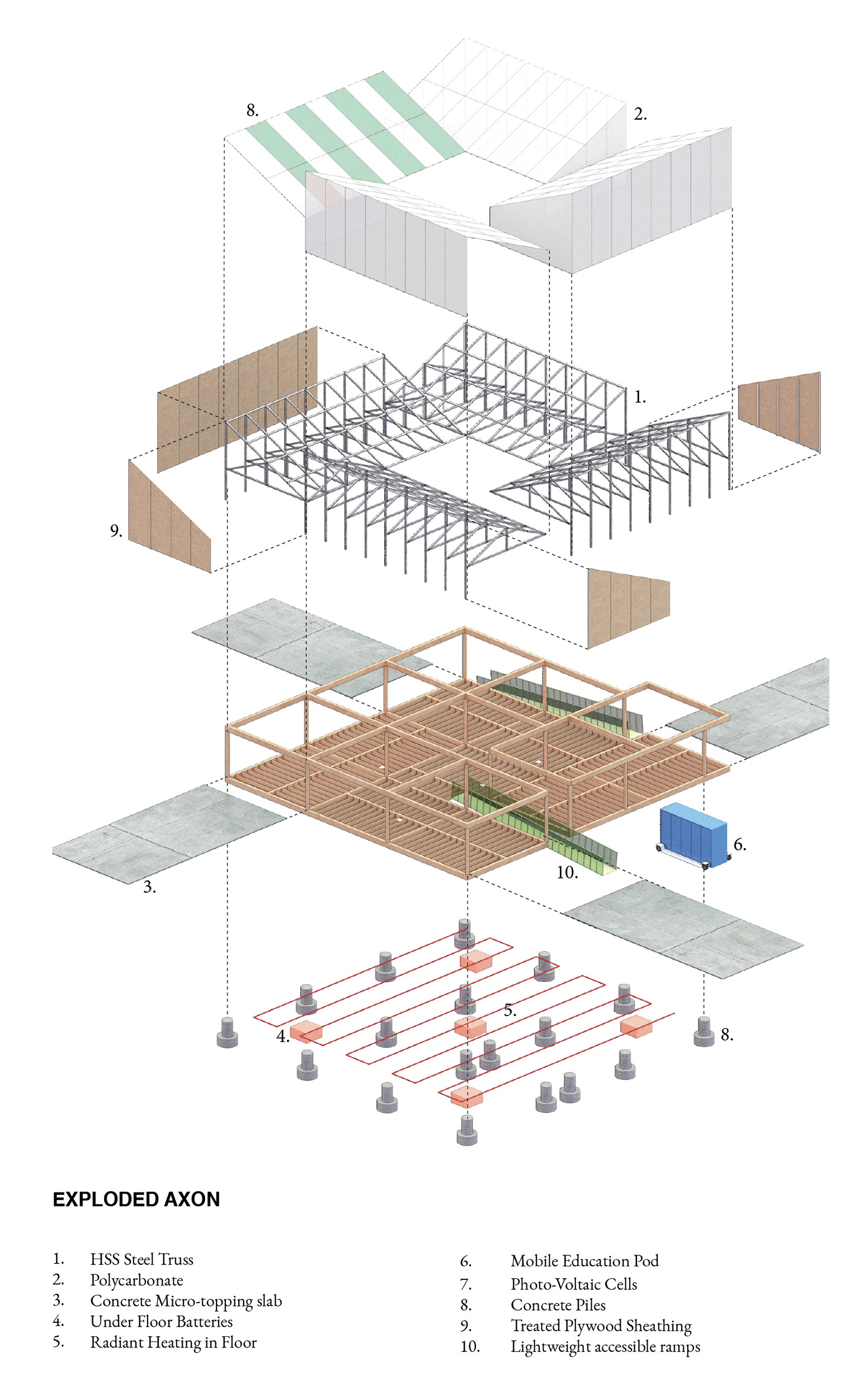
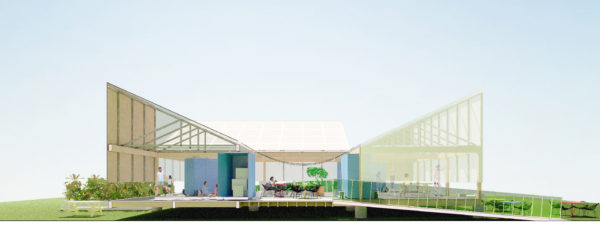
Cut through the courtyard, suggests the privacy created through arrangement of the mobile pods containing educational materials as well as storage space
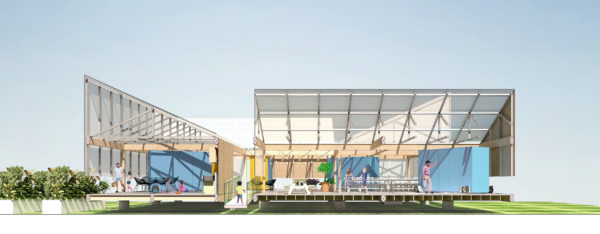
The sloped truss roof provides an armature for adaptability with the ability to suspend resources and project materials, while supporting solar cells above


In a 2011 essay venture capitalist Mark Andreeson famously quipped that “Software is eating the world” as the economy abruptly shifted from hardware to software. In the intervening years an increasing share of our daily life and production has shifted from atoms to bits, but what may not have been immediately foreseen was that the explosion of software necessarily requires a commensurate hardware explosion. The current model seeks to contain and conceal the atoms of infrastructure from the domain of humanity, however as this machinery becomes more and more ubiquitous this clean divide is unlikely. Humanity, and the modern machine substrate that supports it, will be forced into imbrication, and we will endeavor to negotiate the nature of this superimposition. This project presents a model that balances nature, humanity and machines into ecological harmony.
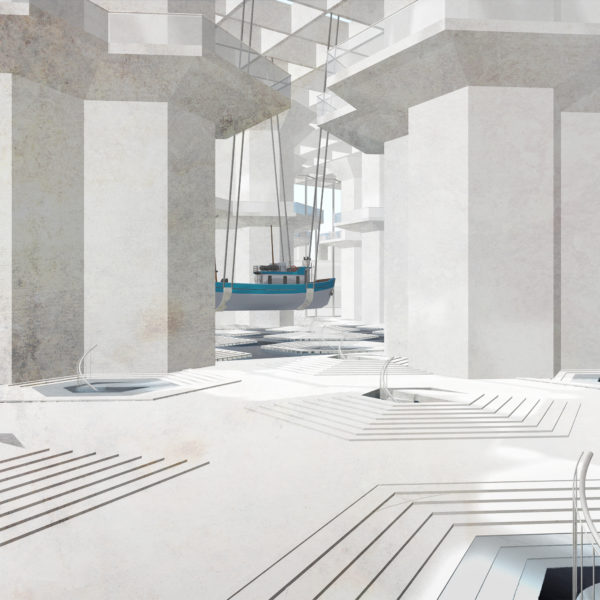
In the marine history gallery, a boat is suspended from the canopy above
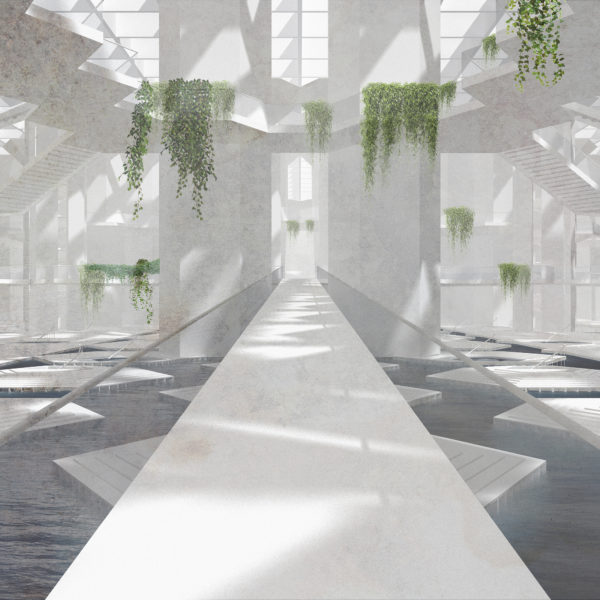
A ramp slowly leads to the second story platform in the heart of the garden
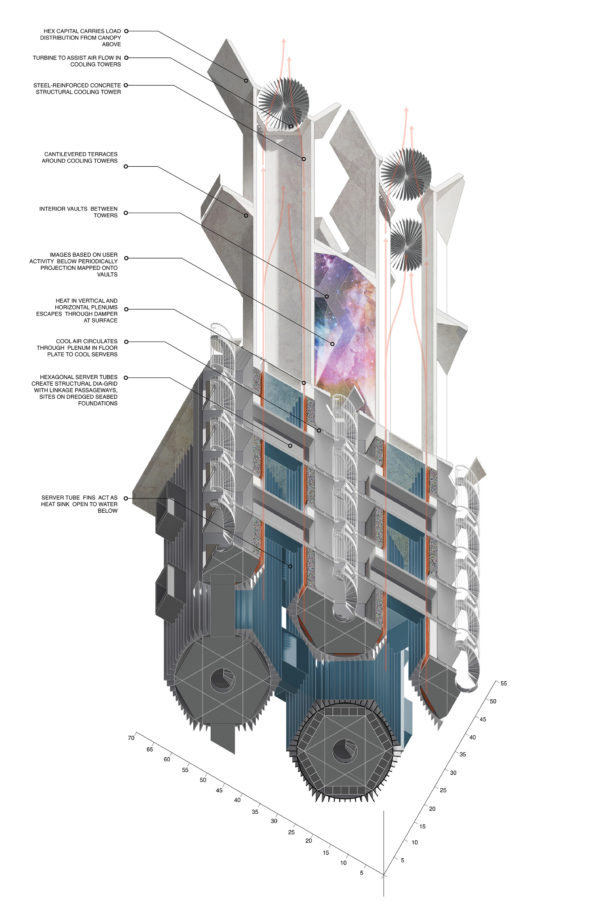
Hexagonal columns within a structural heat sink tube become cooling towers above
The Borgesian data center has two programmatic zones. Below the water’s surface are the stacks, rigidly organizing humanity’s digital public knowledge into an infinite enfilade of chambered spaces organized by axis, whose walls expose interface without, and enclose infrastructure within. Above the surface is the zone of entelechy, where potential becomes actual and the activities of the Library’s patrons, both local and remote, are rendered in a permanent installation composed of constantly flowing data, heat, and moisture, the triple lifeblood of the library. A new digital baroque emerges from the infrastructural substrate below, where the bit flipping servers produce a lush and surreal garden above.


